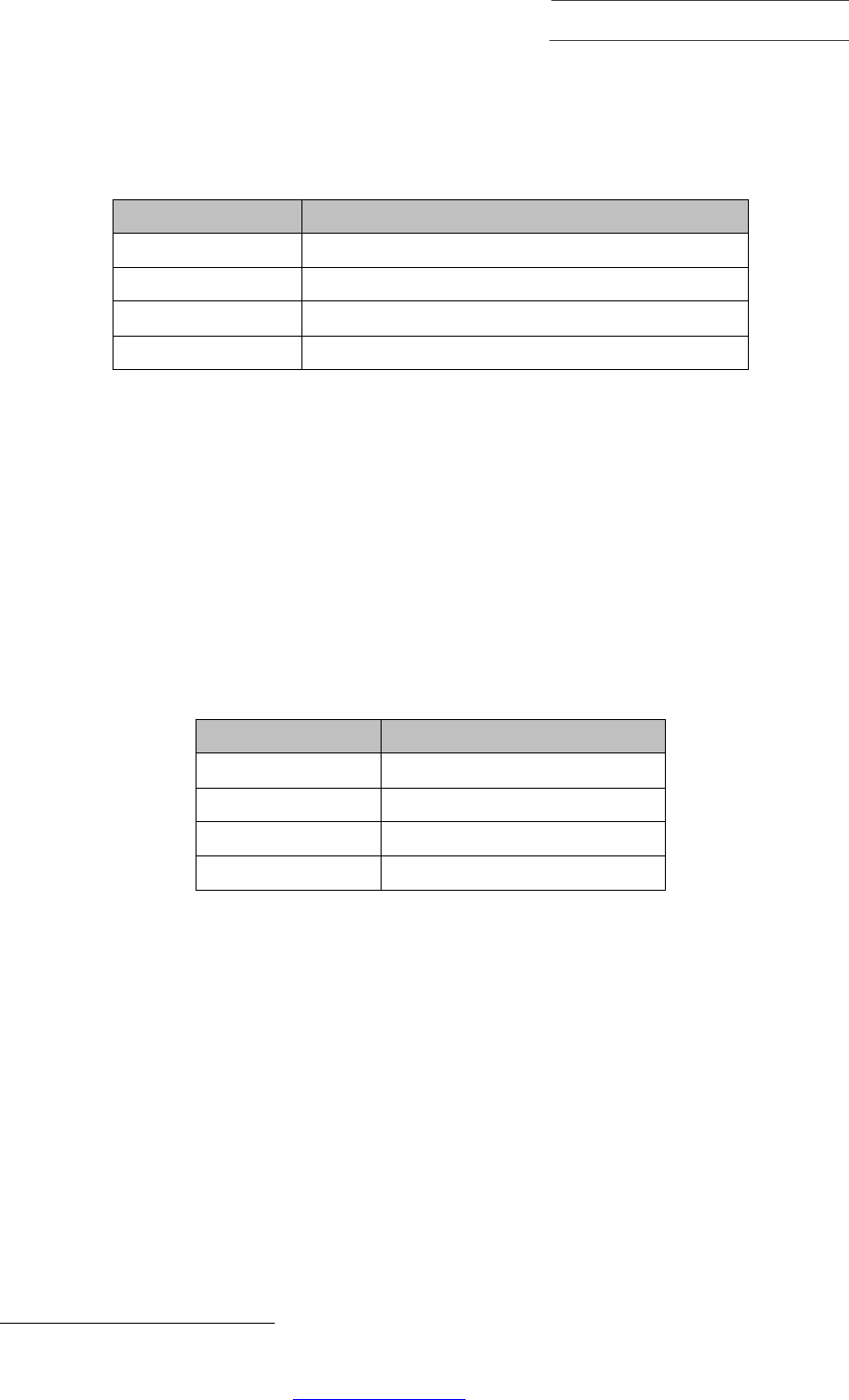
The International Accounting Standards Board is the independent standard
-setting body of the IFRS Foundation, a not-for-profit corporation promoting the
adoption of International Financial Reporting Standards. For more information visit
www.ifrs.org.
Page 1 of 9
Agenda ref
21C
STAFF PAPER
July 2019
IASB
®
meeting
Project
Primary Financial Statements
Paper topic
Classification of interest and dividends in the statement of cash
flows
CONTACT(S)
Kensuke Okabe
kokabe@ifrs.org
+44 (0) 20 7246 6439
Aida Vatrenjak
avatrenja[email protected]g
+44 (0) 20 7246 6456
This paper has been prepared for discussion at a public meeting of the International Accounting Standards
Board (Board) and does not represent the views of the Board or any individual member of the Board.
Comments on the application of IFRS
®
Standards do not purport to set out acceptable or unacceptable
application of IFRS Standards. Technical decisions are made in public and reported in IASB
®
Update.
Purpose of this paper
1. At its December 2017 and February 2019 meetings, the Board made tentative
decisions about the classification of interest and dividends in the statement of cash
flows. At its February 2019 meeting, one Board member made an alternative
suggestion about the classification of these cash flows which some other Board
members suggested the staff should explore. This paper analyses this suggestion and
discusses whether the Board should amend its tentative decisions.
Staff recommendation
2. The staff recommend that the Board retain its tentative decisions regarding the
classification of interest and dividends in the statement of cash flows without
amendment.
Structure of this paper
3. This paper is structured as follows:
(a) Background (paragraphs 4–17); and
(b) Staff analysis and recommendation (paragraphs 18–22)

Agenda ref 21C
Primary Financial Statements │Classification of interest and dividends in the statement of cash flows
Page 2 of 9
(c) Appendix A— summary of classification of interest and dividends
Background
Current IFRS requirements
4. Paragraph 6 of IAS 7 Statement of Cash Flows defines the following activities:
(a) operating activities are the principal revenue-producing activities of the
entity and other activities that are not investing or financing activities;
(b) investing activities are the acquisition and disposal of long-term assets and
other investments not included in cash equivalents; and
(c) financing activities are activities that result in changes in the size and
composition of the contributed equity and borrowings of the entity.
5. Paragraph 14 of IAS 7 states that cash flows from operating activities generally result
from the transactions and other events that enter into the determination of profit or
loss.
6. Paragraph 33 of IAS 7 states that interest paid and interest and dividends received are
normally classified as operating cash flows by a financial institution. However, there
is no consensus on the classification of cash flows for non-financial entities and IAS 7
allows the following classifications.
Table 1: Classification for non-financial entities applying IAS 7
Cash flow item
Classification allowed by IAS 7
Interest paid
Operating or Financing
Dividends paid
Operating or Financing
Interest received
Operating or Investing
Dividends received
Operating or Investing
Scope of the project and the Board’s tentative decisions for the statement of
cash flows
7. Regarding the statement of cash flows, the Board is proposing:
(a) to eliminate options for the classification of the cash flows from interest and
dividends (see paragraphs 10–14); and

Agenda ref 21C
Primary Financial Statements │Classification of interest and dividends in the statement of cash flows
Page 3 of 9
(b) to require entities to use the operating profit subtotal as the starting point
for the indirect reconciliation of cash flows from operating activities.
8. The Board is not proposing to:
(a) seek full alignment between the operating section of the statement of cash
flows and the corresponding sections in the statement(s) of financial
performance; or
(b) make further improvements to the statement of cash flows, besides those
mentioned above.
9. At its November 2017 meeting
1
, the Board tentatively decided to clarify the definition
of ‘financing activities’ in IAS 7 (see paragraph 4(c)) by indicating that a financing
activity involves:
(a) the receipt or use of a resource from a provider of finance (or provision of
credit).
(b) the expectation that the resource will be returned to the provider of finance.
(c) the expectation that the provider of finance will be appropriately
compensated through the payment of a finance charge. The finance charge
is dependent on both the amount of the credit and its duration.
Classification of dividends and interest for non-financial entities
10. At its December 2017 meeting, the Board tentatively decided to remove the
classification options for interest and dividends (see Table 1) for non-financial entities
and require the classifications shown in Table 2.
2
Table 2: Classification for non-financial entities applying the tentative decisions
Cash flow item
Classification per Board’s
tentative decisions
Interest paid
Financing
Dividends paid
Financing
Interest received
Investing
Dividends received
Investing
1
https://www.ifrs.org/news-and-events/updates/iasb-updates/november-2017/
2
https://www.ifrs.org/news-and-events/updates/iasb-updates/december-2017/

Agenda ref 21C
Primary Financial Statements │Classification of interest and dividends in the statement of cash flows
Page 4 of 9
11. This tentative decision:
(a) requires entities to classify each type of cash flow (dividends paid,
dividends received, interest paid and interest received) in a single section of
the statement of cash flows; and
(b) results in a classification in the statement of cash flows that is generally
consistent with the classification of the related income or expense in the
statement(s) of financial performance.
Classification of interest and dividends for financial entities
12. At its February 2019 meeting, the Board discussed whether the classification for non-
financial entities in Table 2 should be applied to financial entities.
3
The Board noted
that the proposed approach to classification for non-financial entities could not be
applied to financial entities without modification. This is because such an approach
would result in cash flows that are clearly operating in nature being classified as
investing or financing (for example, interest paid would be classified as financing by a
bank).
13. The Board therefore decided to propose an approach for financial entities that would
result in the outcomes described in paragraph 11. Applying this approach, financial
entities will apply the following guidance to determine the classification of their
interest and dividends cash flows:
(a) if the entity presents related income or expenses in a single section of the
statement(s) of financial performance, the entity shall present related cash
flows in that section; or
(b) if the entity presents related income or expenses in more than one section of
the statement(s) of financial performance, the entity shall make an
accounting policy choice regarding the section of the statement of cash
flows in which to present related cash flows.
3
By financial entities we mean entities that provide financing to customers as a main business activity and/or
invest in the course of their main business activities in assets that generate a return individually and largely
independently of other resources held by the entity.

Agenda ref 21C
Primary Financial Statements │Classification of interest and dividends in the statement of cash flows
Page 5 of 9
14. Consequently, financial entities would classify their interest and dividends cash flows
as shown in Table 3.
4
Table 3: Classification for financial entities applying the tentative decisions
5
Cash flow item
Classification per Board’s tentative decisions
Interest paid
Operating or Financing
Dividends paid
Financing
Interest received
Operating, Investing or Financing
Dividends received
Operating or Investing
Alternative approach
15. At the February 2019 meeting, one Board member suggested that both financial
entities and non-financial entities should classify dividends received, interest paid and
interest received as operating cash flows (dividends paid would remain classified as
financing cash flows). Table 4 presents the classification of cash flows applying this
approach.
Table 4: Suggested alternative classification for all entities
Cash flow item
Classification
Interest paid
Operating
Dividends paid
Financing
Interest received
Operating
Dividends received
Operating
16. The Board member suggested this approach because it would:
(a) be consistent with the Board’s objective of eliminating options for the
classification of interest and dividends cash flows (see paragraph 7(a));
(b) reduce complexity in preparing the statement of cash flows; and
(c) improve comparability between entities applying IFRS Standards and
entities applying US GAAP.
4
https://www.ifrs.org/news-and-events/updates/iasb-updates/february-2019/
5
Refer to Variant 2 of Approach B of AP21B February 2019

Agenda ref 21C
Primary Financial Statements │Classification of interest and dividends in the statement of cash flows
Page 6 of 9
17. This approach was not included in the staff paper nor was discussed in detail at the
February 2019 Board meeting. However, a few of Board members asked staff to
consider this approach.
Staff analysis and recommendation
Advantages of the alternative approach
18. As with the Board’s proposed approach, the alternative approach described in
paragraph 15 would achieve the Board’s objective of eliminating options for the
classification of interest and dividends cash flows. This will reduce diversity in
practice making users’ analysis of the statement of cash flows simpler and less
costly—users would not need to identify where in the statement of cash flows interest
and dividends cash flows have been classified.
19. Additional advantages of the alternative approach are that:
(a) it would be simpler for preparers to apply and easier for users to understand
than the Board’s proposed approach.
(b) it would be consistent with the approach to classifying operating cash flows
described in paragraph 14 of IAS 7 (see paragraph 5) because dividends
received, interest paid and interest received generally result from
transactions and other events that enter into the determination of profit or
loss.
(c) it would be less costly for preparers to apply because:
(i) they would not need to determine how to classify these cash
flows; and
(ii) for many entities this approach would not result in a change to
existing practice (our analysis of 85 financial statements of
non-financial entities shows that many entities classify cash
flows from dividends received, interest paid and interest
received in the operating section (see Appendix A)).
(d) it would be consistent with US GAAP which generally requires dividends
received, interest paid and interest received to be classified as operating

Agenda ref 21C
Primary Financial Statements │Classification of interest and dividends in the statement of cash flows
Page 7 of 9
cash flows.
6
Consequently, this approach would help users compare entities
that apply US GAAP with entities that apply IFRS Standards.
Disadvantages of the alternative approach
20. The alternative approach has the following disadvantages:
(a) it is arguably inconsistent with the definition of operating activities in
paragraph 6 of IAS 7 (see paragraph 4). This is because, for non-financial
entities, interest paid generally would not arise from the entity’s main
revenue-producing activities but would meet the definition of financing
activities—cash flows from interest paid represent the compensation that an
entity pays to the provider of finance. Whilst we could consider changing
the definition of operating cash flows, this might go beyond the scope of
this project (see paragraph 8(b)).
(b) if the Board were to change the definition of operating cash flows as
suggested in paragraph 20(a), this would result in less alignment between
the operating profit section of the statement(s) of financial performance and
the operating cash flows section of the statement of cash flows than the
Board’s proposed approach. We acknowledge that the Board has tentatively
decided not to seek full alignment between the statements (see paragraph
8(a)). However, we think that where alignment can be achieved it can
increase the understandability of the resulting information.
(c) if operating cash flows include cash flows arising from income and
expenses not included in operating profit, it may seem counter-intuitive to
require operating profit as a starting point for the indirect reconciliation of
operating cash flows. Entities will need to present additional line items in
the operating cash flows section for interest and dividends cash flows.
6
US GAAP stipulates that:
1. cash receipts from returns on loans, other debt instruments of other entities, and equity securities -
interest and dividends are cash inflows from operating activities (ASC 230-10-45-16(b)); and
2. cash payments to lenders and other creditors for interest are cash flows from operating activities (ASC
230-10-45-17(d)).

Agenda ref 21C
Primary Financial Statements │Classification of interest and dividends in the statement of cash flows
Page 8 of 9
Staff recommendation
21. Whilst the alternative approach has significant advantages, we think it would require
amendments to the definition of operating activities in IAS 7 which would be a
fundamental change that could have unintended consequences. It would also be
contrary to the Board’s decision to make limited changes to IAS 7. Furthermore, it
would be inconsistent with the Board’s proposed definition of operating profit to
define cash flows from operating activities such that they include cash flows from
income and expenses not included in operating profit.
22. We therefore recommend that the Board retain the current tentative decisions
regarding the classification of interest and dividends in the statement of cash flows.
We propose to describe the alternative approach and the reasons for rejecting it in the
Basis for Conclusions on the Exposure Draft.
Question
Does the Board agree to retain its tentative decisions regarding the
classification of interest and dividends in the statement of cash flows without
amendment?

Agenda ref 21C
Primary Financial Statements │ Classification of interest and dividends in the statement of cash flows
Page 9 of 9
Appendix A— summary of classification of interest and dividends
A1. We have analysed how entities classify interest and dividends in the statement of cash
flows, using a sample of 85 non-financial entities and a sample of 15 financial
entities. The results of this analysis are shown in the following tables:
Non-financial entities
Operating Investing Financing Not clear
Interest paid 51 0 31 3
Interest received 47 29 1 8
Dividends paid 2 0 78 5
Dividends received 32 38 0 15
Financial entities
Operating Investing Financing Not clear
Interest paid 8 0 3 4
Interest received 9 1 0 5
Dividends paid 1 0 11 3
Dividends received 6 3 0 6
